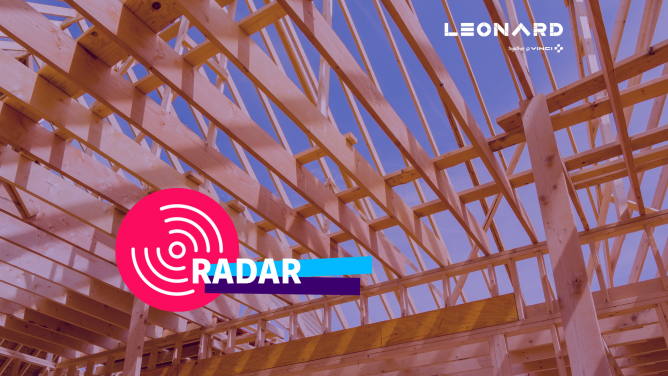Startups trying to trap CO2 within concrete are on the rise
Concrete is almost impossible to replace, it is the second most used substance on the planet after water. But its impact on the environment is high : for every kilogram of cement produced, between 800 grams and 1 kilogram of CO2 is emitted.
Founded in 2017, CarbonCure set out to reduce the carbon footprint of the concrete industry using carbon sequestration into cement. The company is working with raffineries delivering CO2 to jobsites. During the mixing phase of the concrete, CO2 is injected causing it to react and turn it into a mineral. The end product is as durable as regular concrete according to the CarbonCure.
To build its new headquarters in California, LinkedIn just announced a partnership with Carboncure. The new eco-friendly building will open in 2021 and have space for 1 000 people.
RiskX, the app that wants to make construction sites safer, just won a reward from the american construction industry
The app developed by Suffolk, one of the leading construction firm in the USA, has won the recognition of the Building Trades Employers’ Association, a powerful union, for increasing jobsite safety.
It allows workers to enter real-time data about site safety and track the potential risks so they can be reduced on the long run. And it works : Suffolk saw a 29% decrease in lost time due to injury. Overall it helped increased the total hours worked by 12 %.
Recently, the app announced a new partnership with Smartvid.io, an image analysis company.
Together, they are developing a predictive algorithm which could detect hazards and potential accidents from real time video to alert staff on time.
Safety is a top priority for building companies. More than 21 % of all work deaths happen in the construction industry in the USA. The percentage is similar in Europe.
A group of Swiss researchers is making house building more sustainable with digital
The DFAB House is the first habitable house designed, planned and built using predominantly digital processes, both on-site and off-site.
The three-level building (220 square meters) near Zurich has 3D-printed ceilings, energy-efficient walls, timber beams assembled by robots on site, and an intelligent home system. The team used 60 % less cement than usual and has passed the Swiss building safety codes.
According to the UN, the construction sector is responsible for nearly 40 % of global energy consumption and CO2 emissions. And using more robots and digital processes during the construction is one part of the solution.
A new model of industrial exoskeleton is out and it could help construction tackle several problems
Sarcos Robotics, a company working on exoskeletons and robotics, unveiled a first version of its Guardian XO, its most advanced industrial exoskeleton model to date. The project has been developed during 20 years and is partially funded by the US Department of Defense.
The Guardian XO is a full-body industrial exoskeleton, battery-powered, that can help workers to safely lift up to 90 kilos and walk at human speed during extended work sessions.
Exoskeletons address three main concerns for industrial workers and companies : improving safety by protecting bodies, saving long term money by reducing injuries and addressing skilled labour shortage by making humans more efficients.
Sarcos Robotics is not the first brand to make industrial exoskeleton. Ottobock, a German company, is producing exoskeletons used by some car makers like Toyota or Ford.
Exoskeletons global market could weight $2 billion by 2025, growing at an impressive rate of 40% per year.


